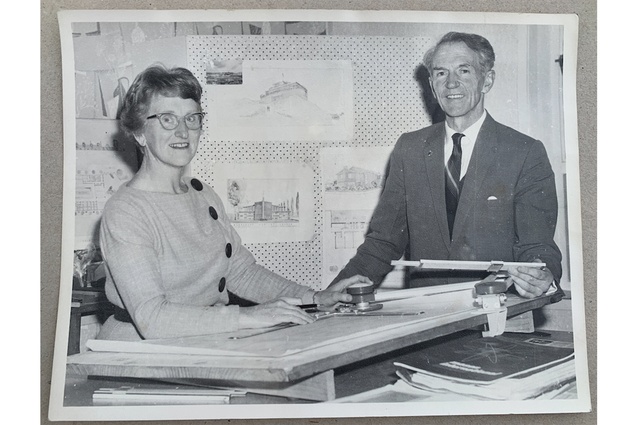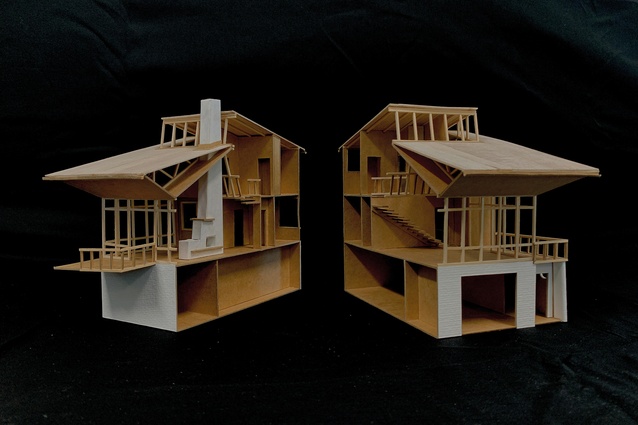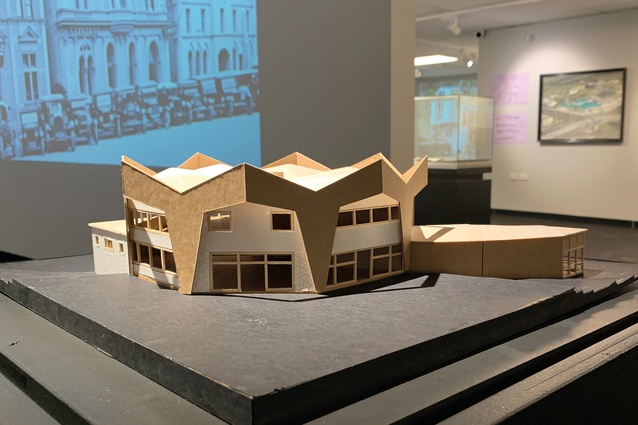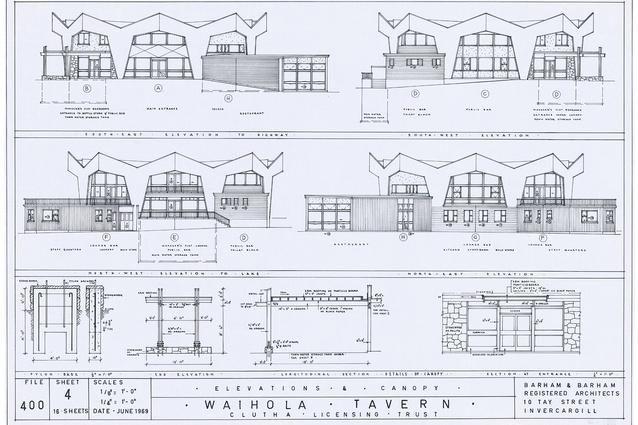Exhibition: Monica Barham So You’re Building: You and the Architect
Bronwen Kerr reviews Monica Barham So You’re Building: You and the Architect, 11 May–16 June 2024, He Waka Tuia, Invercargill.
This detailed retrospective of the work of Monica Barham, Aotearoa’s first female registered architect in practice, is a revelation to most of us. It is curated by architect Megan Rule, who, as a teenaged Southlander, worked in the office founded by Barham’s father. But there was no mention of his remarkable daughter. Rule has dug deep, disappeared down rabbit holes and travelled her home province to assemble Barham’s life details through drawings and documents. The exhibition’s name comes from a radio talk Barham gave in Dunedin in 1949 — an impressive achievement for a woman during this period but, unfortunately, lost to time.
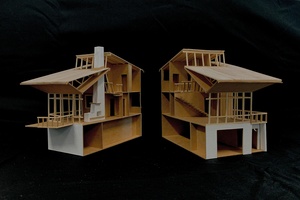
The exhibition is arranged in a chronological fashion. Architectural drawings and Barham’s paintings line the perimeter of the gallery space, as well as text reorientating us to culture and place, globally, in the early and mid-20th century. Beautiful wood and card models made by MArch students from AUT sit on plinths, as do other documents from Barham’s life. There is also, remarkably, a small, limited-edition book to accompany the exhibition.
Monica F Barham (née Ford) was born in Dunedin in 1920. From 1937, she worked, as a teen, as both a drafting apprentice and a collaborator in her father’s Invercargill practice, Allan C Ford Architect. The blueprints from this period indicate a transition from the arts and crafts form to a sleeker art deco style. They already show characteristics seen in Barham’s later work. Notable is the RSA (1939), on the main road in Bluff, demonstrating a distinctive Art Deco treatment but in the local brick. It also shows a practical response to the harsh southern environment with enclosed, sheltered porches. Rule compares the streetscape in Bluff to that of the famous Napier Art Deco waterfront.
By 1945, Barham had completed her final two years of study in Auckland. She was an extremely high-achieving student and, with her previous experience, went straight on to be registered. She began a practice, Barham and Barham Architects, in 1946, with her new husband, war returnee Cecil Barham. Cecil had been offered a partnership in the Ford practice but turned it down to work on an equal footing with his wife. With credit to Cecil, it seemed a progressive approach in those more-conservative times. What followed were three decades of prolific work (a job list that reportedly approached 500), which displayed an energy and enthusiasm that is hard to comprehend. The Barhams also, unbelievably, had six children and ran a small family-sustaining farm.
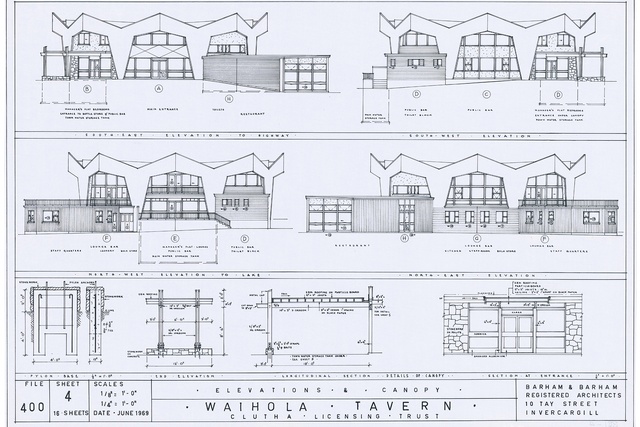
Barham and Barham Architects was responsible for numerous public projects spread across Murihiku — churches, RSAs, clubs and taverns — as well as many houses. The models are invaluable and give the projects a freshness and sense of newness. Indeed, the Don Street Medical Centre sits just a few steps away from this exhibition. Though looking tired today, its concrete walled enclosure, distinctive circular-hole motifs and double-height entry recess remain strong forms. However, the model completes the original clever design with a slatted screen enclosing the stair within the double-height volume to provide privacy and shelter to the split entry. This project was, in fact, the first known by a New Zealand woman architect to receive an architectural award.
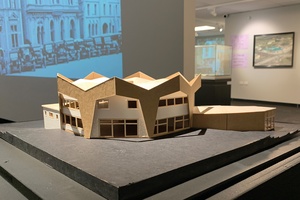
The Stuart Residence in Otatara, Invercargill, (1960) is presented in both an exquisite sectional model and the original drawings. Its playful, inverted truss roof, clerestory windows and efficient sculptural form have lessons for us still today. These loving representations will, hopefully, go some way to giving Southlanders pride in their unique, mid-century architectural heritage.
Blueprints rendered in elegant watercolours are a link to another of Barham’s talents. She was a very skilled watercolour artist and some of her paintings are in the Invercargill Public Art Gallery collection. They show a strong hand and a gentle colour palette, demonstrating the love of a landscape of weather extremes from Ōreti Beach to Arrowtown. She was a Southern woman, both practical and resourceful.
This exhibition is physical evidence of Rule’s thorough work. It shines a light on Barham’s powerful and under-published legacy for all those proud Southlanders. I am not alone in wanting to know even more about this talented architect and artist.


